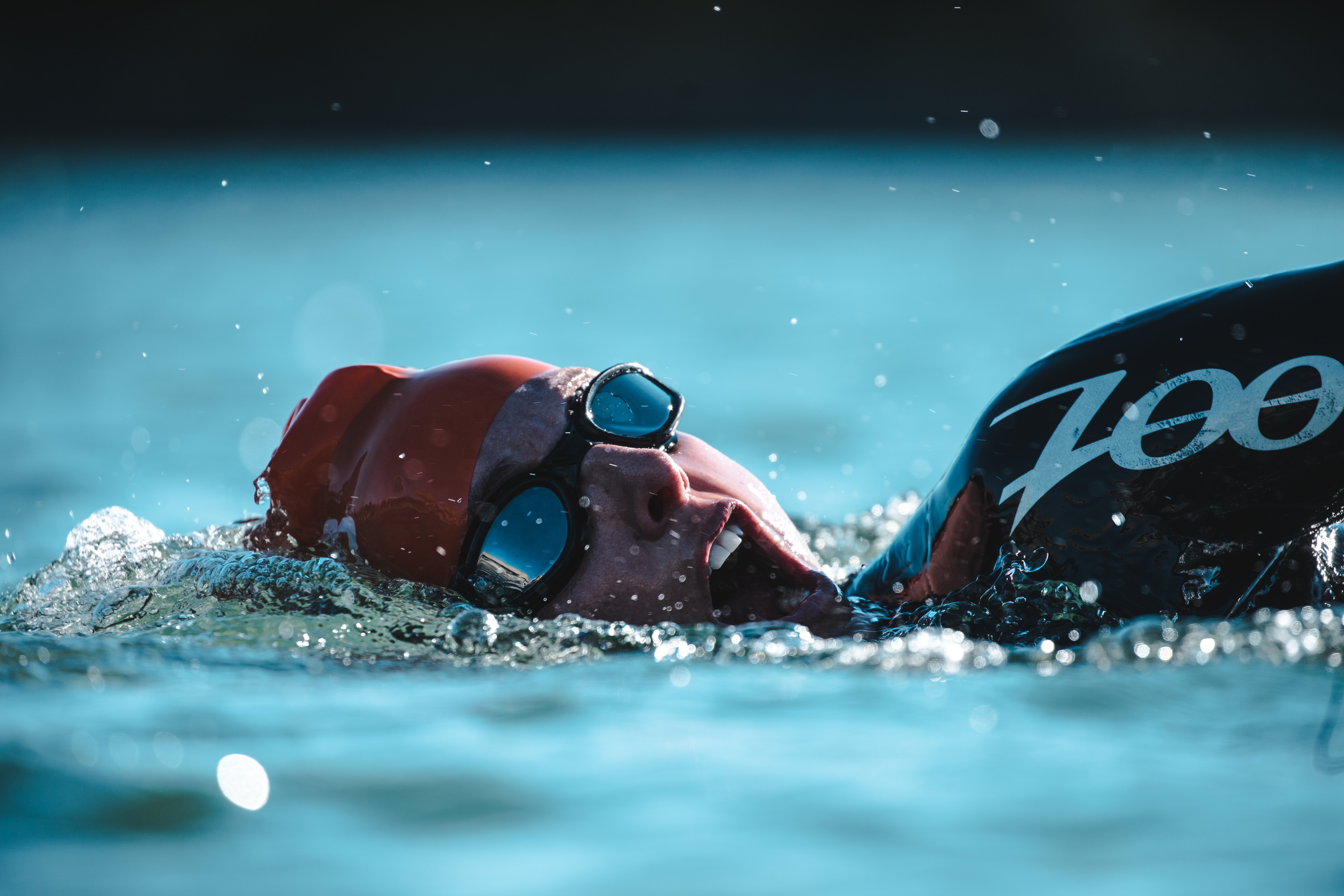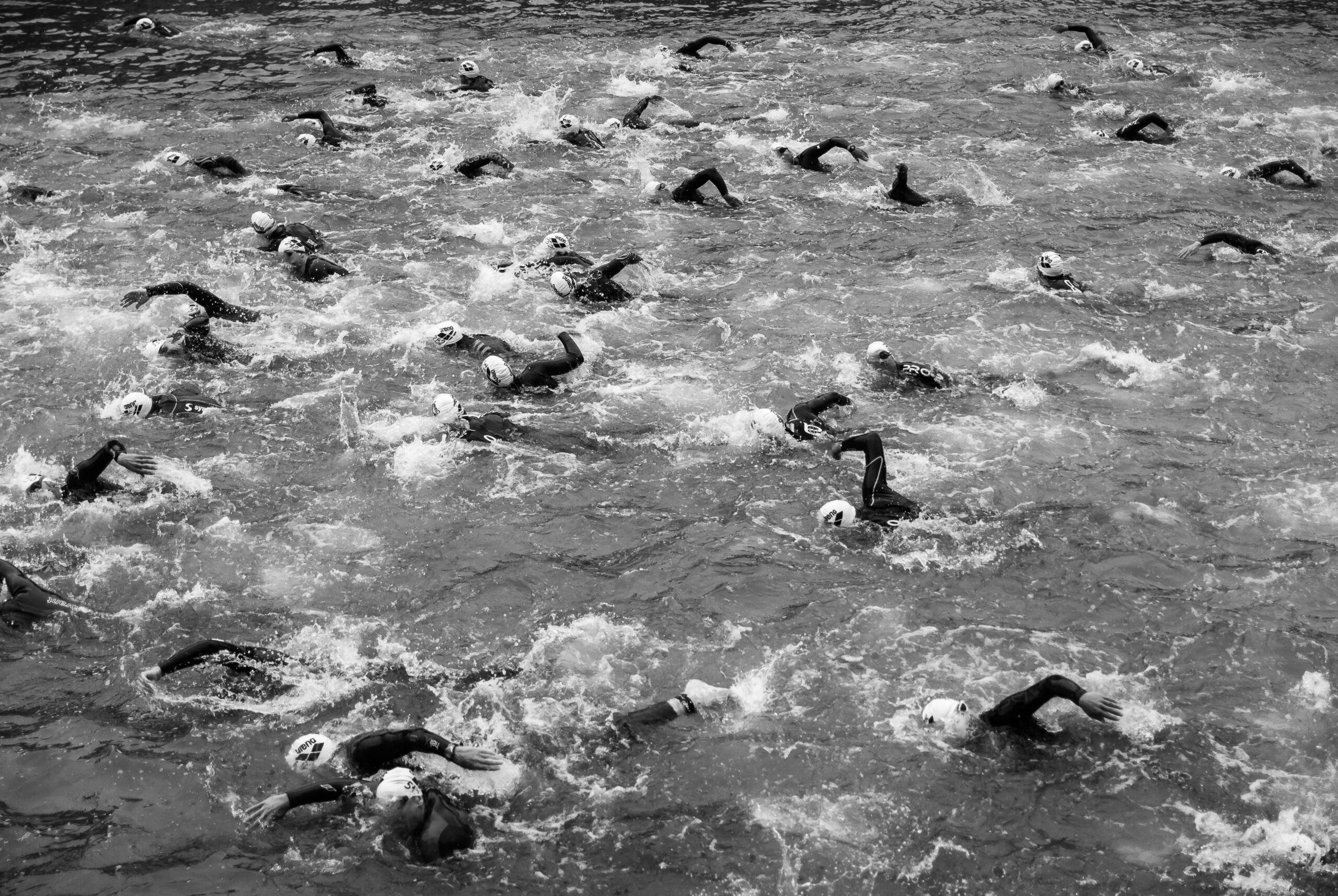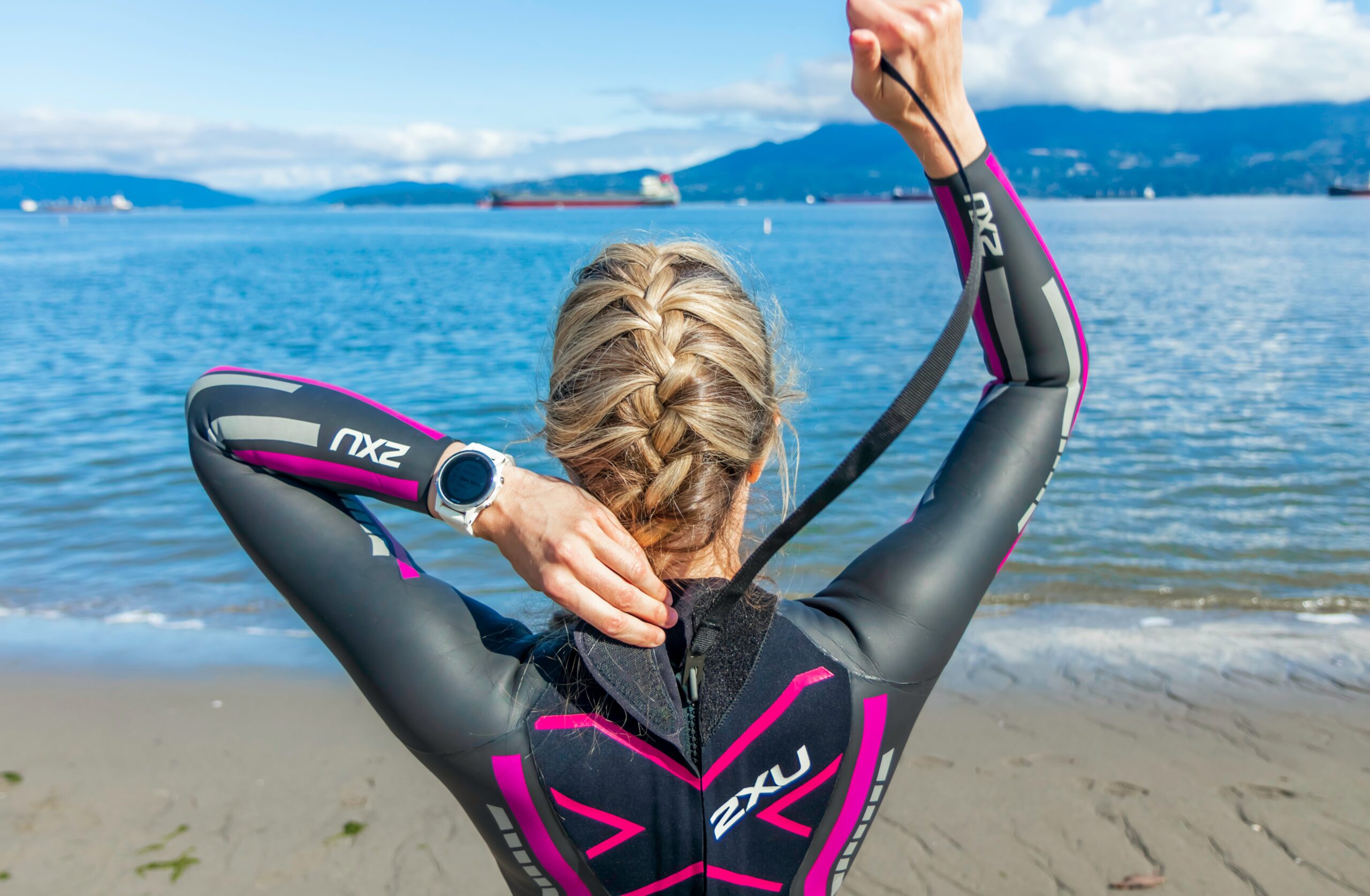For many the swim portion of an Ironman is by far the most daunting piece of the challenge. A 3800m swim in open water is a challenge for even the most seasoned swimmers. While it is a challenge, the challenge is the best part of completing an Ironman. In order to help you manage your Ironman swim we have put together some of our thoughts on how to prepare for it.
- Endurance
The swim leg will take more than an hour for most amateur triathletes. This is a considerable time to be swimming constantly. In addition you will have the added resistance of a wetsuit and the water conditions to contend with. Speed is much less relevant than endurance in this scenario. You must have the conditioning and strength to handle the conditions and keep your momentum going for the entire leg. You must include some longer swims in your training to prepare both physically and mentally for this task.
- Technique
Being an efficient swimmer not only saves energy but also increases swim speed. While you don’t need to be a good sprinter, having good rhythm and a smooth stroke can help you cut down the distance with a lesser energy cost. Spending some time on becoming efficient can make the overall task much more manageable.

- Experience
Many triathletes will complete most of their preparation in the pool. While this is a reasonable approach it will not be enough on its own. The pool conditions are consistent and stable. Open water can throw a huge variety at you from tide to waves and even challenges with sighting. For many, panic sets in when there is a sudden realization that they are in unfamiliar territory. It is important in your preparations to get exposure to different venues and conditions. This allows you to develop some flexibility and comfort with changing conditions. Your pool technique may need to be adjusted day to day in different venues. This flexibility and comfort can prove vital on race day.
- Strategy
On race day many will start to overthink the race. They might even make changes to plans which they have spent months preparing for. An Ironman swim is simple. Finish as quickly as possible using the least energy possible. You must now only focus on identifying how you might do that. Look at the course and get an idea of how far apart the buoys are and where they are positioned. Check for any line sights to features on the land which may help you spot quicker. You may also take note of the field. Large groups can be chaotic and crowding can cause confusion. Maybe start in front and let fast swimmers either tow you or pull away leaving you in some calm clear space. Many beginners start behind with the other novice and scared swimmers, which contributes to the chaos in the water. Using some common sense can go a long way.

- Wetsuit
Do not fear a wetsuit. They help you float and go faster. There is a reason the best swimmers still wear them whenever they have the chance. The swimmer that tells me they feel more natural without one is likely to be going slower, albeit with better technique. Make sure your wetsuit fits and that you have done some swimming in it before race day. They chafe in most cases so knowing the chafe points and using anti chafing cream works a treat. If any water sloshes through the wetsuit then it isn’t fitting right.
- Transition
After swimming on your belly for a while you can start to feel a little disorientated. This often presents itself when you get back on your feet. You may even feel a little sick if you have taken some mouthfuls of saltwater on your journey. As you move through transition, take your time to settle on your legs and calm yourself. It’s ok to feel a little off, it will pass. You must relax and let your body readjust. This experience may cause a novice to panic which only makes things worse.
The swim is definitely a challenging leg but so are the others. They each present their own challenges. In order to prepare well it is important to consider the demands and possibilities of the event and try to expose yourself to them in preparations. You will make mistakes and you will learn. It is just a lot better timing, to learn what you need to learn before the day of your race.
Don’t forget to sign up to our newsletter below to receive exclusive content. If you enjoyed this article check out some of our others here!
